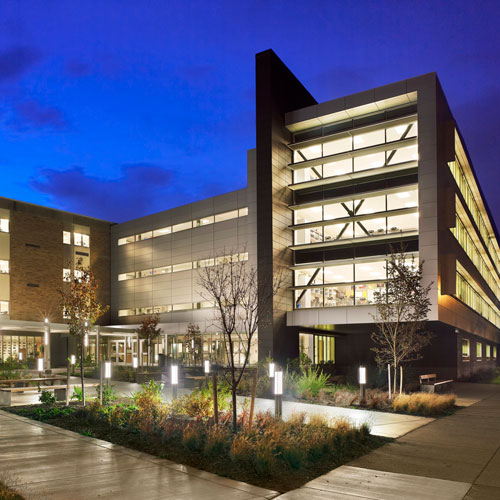
—Susan Elman, Executive VP & General Counsel
The debate about the longevity of brick-and-mortar retail has swirled in financial circles and the media for several years. Input from within the industry is often absent from the conversation, though, and its numbers tell a different story. Rouse Properties, for example, which has a national portfolio of 35 malls in 22 states, has no need to defend the durability of the enclosed-mall model because it can simply point to its books as proof. Here, Susan Elman, Rouse’s executive vice president and general counsel, lays out a few of the metrics (as of 2014’s second quarter) that demonstrate the company’s compelling growth over the past two years since it split off from General Growth Properties (GGP).
3 months
Elman joined Rouse only a few months after its spinoff, becoming the first member of its legal team. Before her arrival, Rouse had relied on GGP to handle all legal requirements, so Elman’s first move was to meet with GGP’s lawyers to get a sense of what Rouse’s legal department should look like, both in the short and long term.
She knew she wouldn’t have the resources that GGP had, but within one year, she had Rouse operating completely independently from its predecessor. Elman had to balance what could be done in-house and what needed to be outsourced to third-party firms, and she ultimately decided that her department would handle leasing, operational issues, and transactional matters.
190 employees
Just fewer than 200 workers were at Rouse when Elman joined in 2012. Employees took on many different roles and worked hard together to build a fundamentally strong business. “Everyone was communicating all the time, and we all wore multiple hats,” Elman says. “Collaboration was key.”
The new company incorporated some of the policies and procedures GGP had in place, which gave it a solid foundation from which to build. “It was a nonstop pace,” Elman says, “but it was very exciting.”
10 members
Today, Rouse’s legal department comprises six lawyers and four paralegals, and the company has expanded to more than 320 employees. Together, they’ve completed more than $655 million in acquisitions and $520 million of loan refinancing, and they’ve entered into a new corporate credit facility for $545 million.
Rouse’s portfolio spans the United States from coast to coast and has increased from 30 to 35 malls and from 19 to 22 states, making the publicly traded company one of the largest mall owners in the country. Elman’s team continues to collaborate with outside counsel, but her in-house staff is crucial to all Rouse’s transactions. She looks for lawyers with a good business sense, subject-area expertise, and the ability to juggle many issues and legal considerations at once. “Our lawyers still handle many different responsibilities,” Elman says. “Nobody has the luxury of focusing on one area of the law.”

40% up to date
Two-fifths of Rouse’s initial portfolio is either new or undergoing cosmetic and strategic improvements. Rouse is currently investing $200–225 million in capital to significantly improve its properties with amenities and upgrades, and so far it has spent about $65 million and completed four strategic and five cosmetic projects.
“We take a very hard look at the effects of our investment,” Elman says. “We’re determining when and which investments to make. We focus on creating value for our shoppers, retailers, and the local community.” Some of the improvements at the shopping centers are purely cosmetic, but many—including free Wi-Fi, soft seating, and the inclusion of children’s play areas—will completely change and enhance the shopping experience.
4 out of 5 tenants choose to renew
On average, Rouse retains 80 percent of its tenants when the time comes for the retailers to renew their leases. That number was 40 percent when Elman started. “That’s very telling and a testament to our leasing team and expertise,” she says. Because leasing is such an important aspect of Rouse’s business model, Elman and her department have ample opportunity to contribute to revenue generation and help guide the company’s growth.
4.5 million square feet
Rouse’s new leases since its founding have amounted to several million square feet in area. Many financial and media outlets say the era of enclosed shopping malls has ended, but Elman’s view from the inside gives her the perspective to disagree.
“We find that the markets in which we operate offer stability and tend to be less susceptible to the volatility that larger markets experience,” Elman says. “We think there is considerable potential in these markets.” Rouse targets malls geographically placed to be dominant in their markets, and Elman says 80 percent of Rouse’s properties are the only enclosed malls in their geographic area—sometimes within a 100-mile radius. “We can be the only game in town,” she says, “and that’s a unique and compelling business model.”


